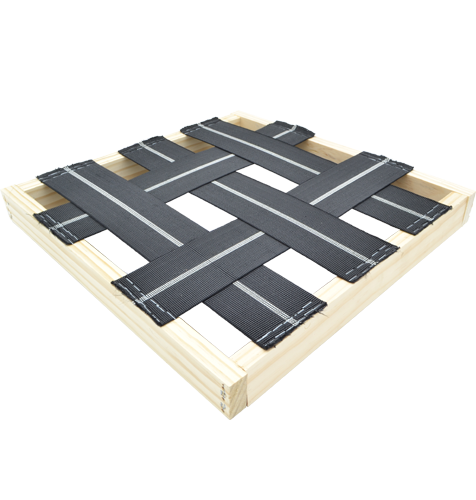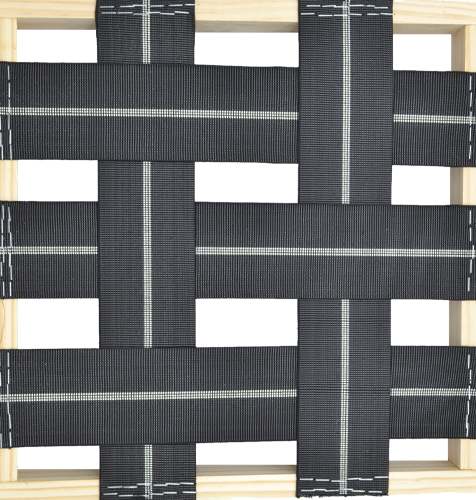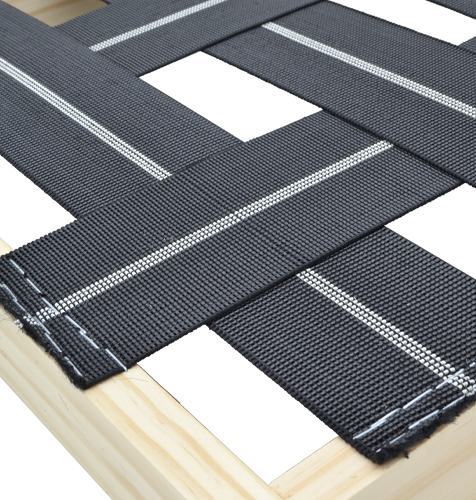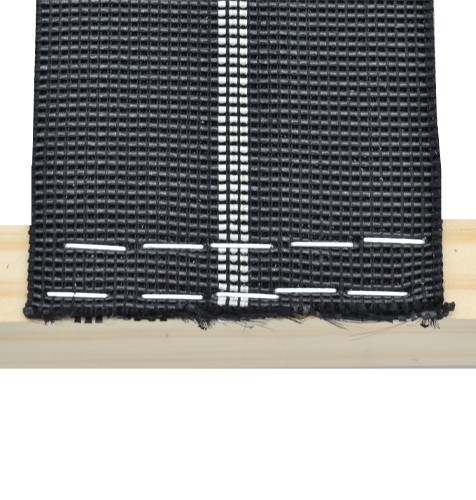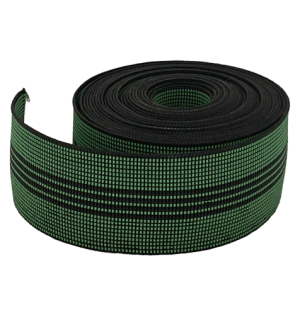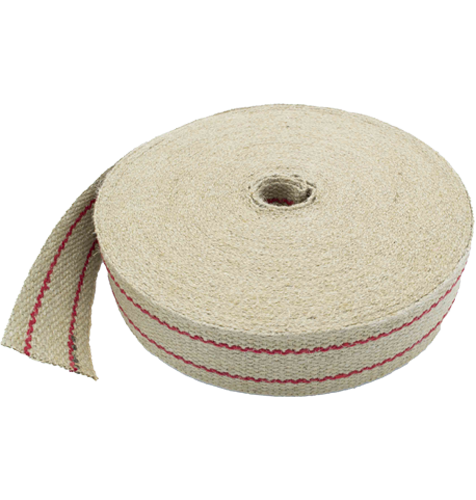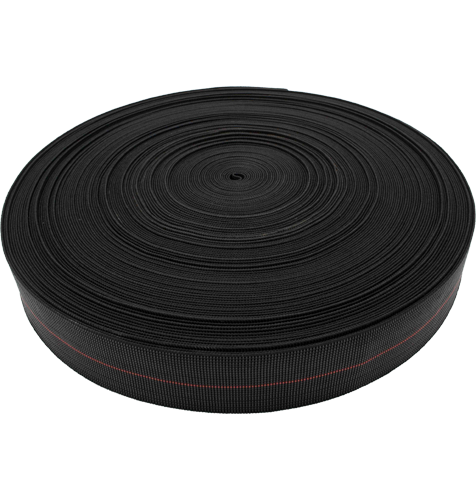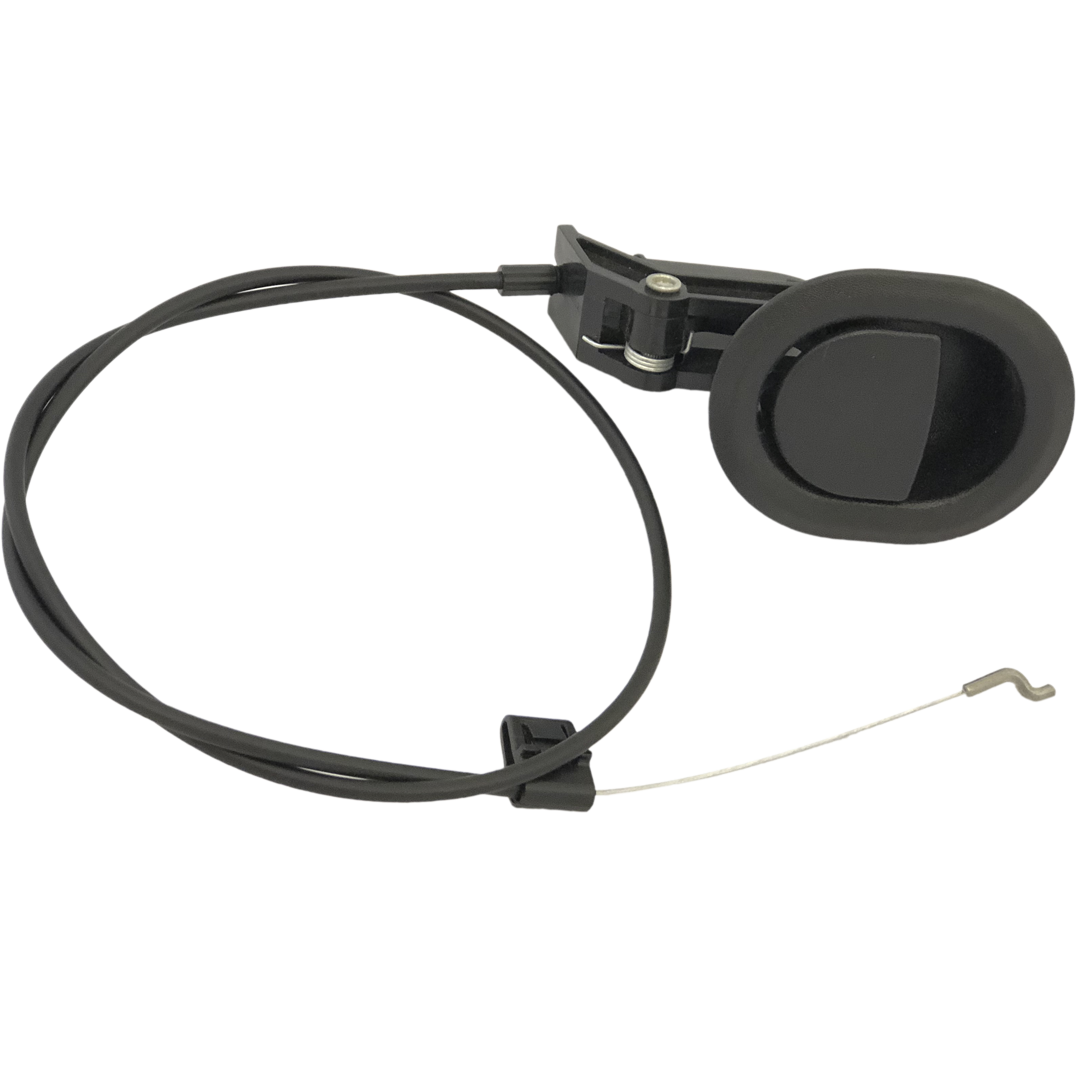Max-Strength Elastic 80mm Seat Webbing
$5.80
In stock
Our Max-Strength Elastic 80mm Seat Webbing is engineered for heavy-duty commercial grade applications that demand the firmest possible support. Designed to be installed by staple gun, it features 80mm width and an extremely low stretch specification of just 20% at 500N. This webbing is black with a single white stripe, identifying its superior strength and durability. Firm Commercial Grade 80mm Seat Webbing - Black. This is the firmest webbing we sell and is used for seating applications which you desire very little stretch. If you’re looking for a firm seat webbing but with some more stretch then see our Premium 70mm Elasticated Seat Webbing (click here), also suitable for DIY. Looking For Another Strength or Type of Webbing? Explore our full catalogue of webbing products (click here) to find the one that fits your specific needs. Whether it’s retro Pirelli, traditional Jute, modern elastic webbing, or support straps, then we’ve got you covered. read more
- Description
- Reviews (0)
- Add a review
Description
Max-Strength Elastic 80mm Seat Webbing - Black with 1 White Stripe
Constructed from continuous beads of natural latex rubber, wrapped in protective threads of polypropylene, this is our most durable and firm seat webbing option. The 80mm width, complemented by a single white stripe, indicates its high-end performance, specifically engineered for heavy-duty and commercial applications.
Is This Maximum Strength Seat Webbing Right For You?
If you’re tackling a project that requires the utmost in seating support firmness, this firm seat webbing is your go-to choice. With a stretch specification of only 20% at 500N, it provides almost no stretch, making it idea for heavy-duty furniture seat webbing. Can be installed with just a handheld staple gun or hammer & tack.
For do-it-yourself projects, be sure to see our range of webbing options (click here) to find what best fits your needs.
How Much Webbing Will You Need?
The required amount can differ based on the strength of the webbing, and exact dimensions of the furniture your working on. As a general guideline:
- 2-3 meters for a dining chair.
- 5-6 meters for an armchair.
- 10-12 meters for a 2-seater sofa.
- 18-20 meters for a 3-seater sofa.
You Can Do It Yourself And Save $$$
Installation of this high-grade webbing can be a little firm but capable with DIY hand tools like a stapler or hammer & tack. If your a professional or need large quantities of this webbing than consider registering for a Trades Account (click here) to view bulk quantities, get storewide discounts, and more.
Reviews (0)
Thank you for making an effort to leave a reivew but to protect against spam we only accept reviews from verified owners. Please proceed to login using the same email address you used when ordering the product.
Customer Login
- There are no reviews yet.



